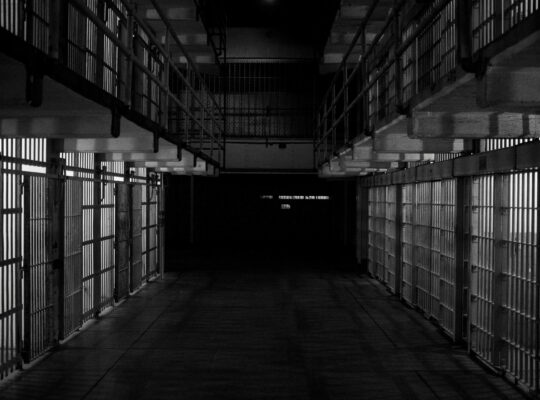Is a home inspection required for a mortgage? No doubt that a great percentage of prospective homeowners tend to ask this question. It is a simple question, but at the same time, it troubles many.
A home inspection, conducted by a certified home inspector, entails a comprehensive examination of a property’s condition. During the process, different aspects of a property are assessed, from the structural components to the mechanical systems, and any existing or potential issues are identified. The key objective of doing this is to provide the buyer with a clear understanding of the condition of the property prior to the finalization of its purchase.
Key Components of a Home Inspection
Home inspections cover multiple areas. The major ones are:
Structural Integrity
- Foundations – The foundation is crucial to the stability and safety of a home. Inspectors look for cracks, settling, and other signs of wear that could indicate potential problems. They also assess whether the foundation is level and properly supporting the structure.
- Walls – Inspectors check both interior and exterior walls for signs of structural issues, such as cracks, bowing, or water damage. They ensure that the walls are stable and free from defects that could compromise the home’s integrity.
- Roofing – The roof is inspected for signs of wear and tear, such as missing or damaged shingles, leaks, or structural damage. Inspectors also check the condition of the gutters and downspouts to ensure proper drainage and prevent water damage.
Exterior
- Siding – The condition of the exterior siding is assessed to ensure it is free from damage, rot, or other issues. This includes checking for proper installation and looking for signs of pests or moisture infiltration.
- Gutters and Downspouts – Inspectors check that gutters and downspouts are securely attached, clear of debris, and functioning correctly to direct water away from the home’s foundation. This helps prevent water damage and basement flooding.
Interior
- Walls, Ceilings, and Floors – The interior walls, ceilings, and floors are examined for signs of damage, such as cracks, stains, or uneven surfaces. Inspectors look for indications of structural issues, water damage, or other defects that could affect the home’s livability.
Plumbing Systems
- Pipes – Inspectors check the condition of the plumbing pipes, looking for leaks, corrosion, or other issues that could lead to water damage or reduced water pressure. They ensure that the pipes are properly installed and functioning as intended.
- Fixtures – All plumbing fixtures, including sinks, toilets, and showers, are inspected for proper operation and signs of leaks or damage. This includes checking for adequate water pressure and ensuring that fixtures are securely attached.
- Water Heaters – The water heater is assessed for its condition, age, and efficiency. Inspectors check for signs of rust, leaks, or other issues that could indicate a need for repair or replacement.
Read More About: How to Buy a Mobile Home Park with No Money
Electrical Systems
- Wiring – Inspectors examine the electrical wiring to ensure it meets safety standards and is free from defects. This includes checking for outdated or faulty wiring, proper installation, and signs of wear or damage.
- Outlets – All electrical outlets are tested for proper operation and safety. Inspectors ensure that outlets are securely installed, grounded correctly, and free from damage.
- Electrical Panels – The electrical panel is inspected to ensure it is properly labeled, free from defects, and capable of handling the home’s electrical load. Inspectors check for signs of wear, improper installation, or other issues that could pose a safety risk.
Heating and Cooling Systems
- HVAC Units – The heating, ventilation, and air conditioning (HVAC) units are inspected for proper operation, efficiency, and signs of wear or damage. This includes checking the condition of the furnace, air conditioner, and other components.
- Ducts – Inspectors examine the ductwork for signs of leaks, damage, or improper installation. They ensure that the ducts are clean and free from obstructions to promote efficient airflow and indoor air quality.
- Thermostats – Thermostats are tested for proper operation and accuracy. Inspectors ensure that thermostats are correctly installed and capable of maintaining the desired indoor temperature.
Insulation and Ventilation
- Attics – The attic is inspected for proper insulation and ventilation to ensure energy efficiency and prevent moisture buildup. Inspectors check for signs of pests, water damage, or structural issues.
- Crawl Spaces – Crawl spaces are examined for proper insulation, ventilation, and signs of moisture or pest infestations. Inspectors ensure that crawl spaces are free from damage and capable of protecting the home from environmental hazards.
Fire Safety
- Smoke Detectors – Inspectors check that smoke detectors are properly installed, operational, and located in the appropriate areas throughout the home. They ensure that detectors meet local safety standards and regulations.
- Carbon Monoxide Alarms – Carbon monoxide alarms are tested for proper operation and placement. Inspectors verify that alarms are installed in critical areas, such as near bedrooms and fuel-burning appliances, to ensure the safety of the home’s occupants.
Home Inspections and Mortgages: The Basics
Is a home inspection required for a mortgage? The straightforward answer is: No, a home inspection is not typically required to obtain a mortgage. However, this does not mean it should be overlooked. While lenders do not mandate a home inspection, they often require an appraisal to determine the property’s value. The appraisal makes sure that the loan amount does not exceed the home’s market value, safeguarding the lender’s investment.
Related Post: Is a Home Inspection Required for a Conventional Loan
Types of Mortgages and Inspection Requirements
Different types of mortgages have varying requirements when it comes to home inspections and appraisals. Understanding these requirements helps in navigating the home-buying process more effectively and ensures compliance with lender expectations. Here’s a closer look at the requirements for conventional loans, FHA loans, VA loans, and USDA loans.
Conventional Loans
Conventional Loans are mortgages that are not insured or guaranteed by the federal government. These loans are often provided by private lenders such as banks, credit unions, and mortgage companies.
Here are some key points regarding inspection requirements for conventional loans:
- Home Inspection: Typically, a home inspection is not required by lenders for conventional loans. However, it is highly recommended for buyers to conduct one to uncover any potential issues with the property. This inspection can provide peace of mind and protect the buyer from unforeseen problems and expenses.
- Appraisal: While a home inspection is not mandatory, lenders do require an appraisal. The appraisal assesses the property’s market value to ensure the loan amount does not exceed the home’s worth. This protects the lender’s investment by verifying that the property is worth the amount being borrowed.
FHA Loans
FHA Loans are mortgages insured by the Federal Housing Administration (FHA), a government agency. These loans are designed to help first-time homebuyers and those with lower credit scores or limited down payments.
The inspection and appraisal requirements for FHA loans are as follows:
- Home Inspection: FHA loans do not require a home inspection. However, the FHA strongly encourages buyers to obtain one to identify any significant issues that could affect the property’s livability and safety.
- Appraisal: FHA loans require an appraisal that includes basic safety checks and ensures the property meets the FHA’s minimum property standards. The appraisal is more detailed than that for conventional loans but is not as comprehensive as a full home inspection. The appraisal checks for structural soundness, safety hazards, and compliance with local building codes.
VA Loans
VA Loans are mortgages guaranteed by the U.S. Department of Veterans Affairs (VA) and are available to eligible veterans, active-duty service members, and certain members of the National Guard and Reserves.
The inspection and appraisal requirements for VA loans are as follows:
- Home Inspection: Like other loan types, VA loans do not mandate a home inspection. However, it is advisable for buyers to conduct one to identify any issues that could impact their decision to purchase the property.
- VA Appraisal: VA loans require a VA appraisal, which includes an assessment of the property’s value and a check against the VA’s Minimum Property Requirements (MPRs). These MPRs ensure the home is safe, structurally sound, and sanitary. The VA appraisal is not as detailed as a home inspection, but it addresses key safety and livability concerns.
USDA Loans
USDA Loans are mortgages backed by the U.S. Department of Agriculture (USDA) and are designed to help low- and moderate-income buyers in rural and suburban areas.
The inspection and appraisal requirements for USDA loans are as follows:
- Home Inspection: USDA loans do not require a home inspection. Nevertheless, it is highly recommended for buyers to conduct one to identify any potential problems with the property.
- Appraisal: USDA loans require an appraisal to ensure the property meets the USDA’s property standards and is worth the loan amount. The appraisal must verify that the home is safe, secure, and in decent condition. While the USDA appraisal checks for specific property standards, it is not as thorough as a full home inspection.
Impact of Home Inspections on Mortgage Approval
When securing a mortgage, it is important to have an understanding of how a home inspection can influence the journey. Although a home inspection isn’t directly required for mortgage approval, its findings can have significant ramifications on different aspects of your loan, including the loan amount, terms, and the appraisal process.
1. Direct vs. Indirect Influence
A home inspection, by its nature, does not directly influence whether your mortgage is approved or not. Lenders primarily base their decision on your creditworthiness, income, and the appraised value of the property. However, the results of a home inspection can indirectly affect these factors and, consequently, your mortgage.
2. Renegotiation of Purchase Price
One of the primary ways a home inspection impacts your mortgage is through the potential renegotiation of the purchase price. If the inspection uncovers significant issues—such as structural damage, outdated electrical systems, or major plumbing problems—you might find yourself in a position where renegotiation is necessary. Here’s how it works:
- Identifying Issues: The inspection report details the problems found in the home.
- Cost Estimation: You, often with the help of contractors, estimate the cost to fix these issues.
- Negotiation with Seller: Armed with this information, you can negotiate with the seller to either lower the purchase price or have them address the repairs before closing.
If the seller agrees to lower the purchase price, the amount you need to borrow may decrease. This can affect your loan in several ways:
- Lower Loan Amount: A reduced purchase price means you may need to borrow less, which can lower your monthly payments and the overall interest paid over the life of the loan.
- Revised Loan Terms: Lenders may adjust the terms of your loan based on the new purchase price. This could include changes in the interest rate or the duration of the loan.
3. Uncovering Problems and Their Effects
If the home inspection reveals substantial issues, these findings can be shared with the appraiser, who might then adjust the home’s appraised value accordingly. Here’s how:
- Inspection Findings: Significant problems such as a faulty foundation, roof damage, or extensive mold could be highlighted in the inspection report.
- Appraiser Consideration: The appraiser considers these issues and may lower the property’s valuation to reflect the cost and effort needed to rectify the problems.
- Impact on Loan Amount: A lower appraisal value directly affects the maximum loan amount the lender is willing to offer. For instance, if you are applying for a mortgage to cover 80% of the home’s value, a lower appraisal will reduce the loan amount you qualify for.
4. Reinforcing the Appraisal
Conversely, a clean inspection report can have a positive impact on the appraisal process:
- Higher Appraisal Confidence: An inspection report that indicates no major issues can reassure the appraiser of the home’s condition, potentially leading to a higher valuation.
- Smoother Loan Process: When the appraisal and inspection reports align in showing a well-maintained property, it can streamline the mortgage approval process, reducing delays and complications.
Example/Scenario of the Impact
Imagine you are purchasing a home for $300,000, and the inspection reveals that the roof needs to be replaced, which would cost $15,000. You negotiate with the seller to reduce the purchase price by $15,000, bringing it down to $285,000. As a result:
- Lower Loan Amount: If you were initially planning to borrow 80% of the purchase price, your loan amount would decrease from $240,000 to $228,000.
- Revised Terms: The lender may adjust the loan terms to reflect this new amount, potentially lowering your monthly payments.








